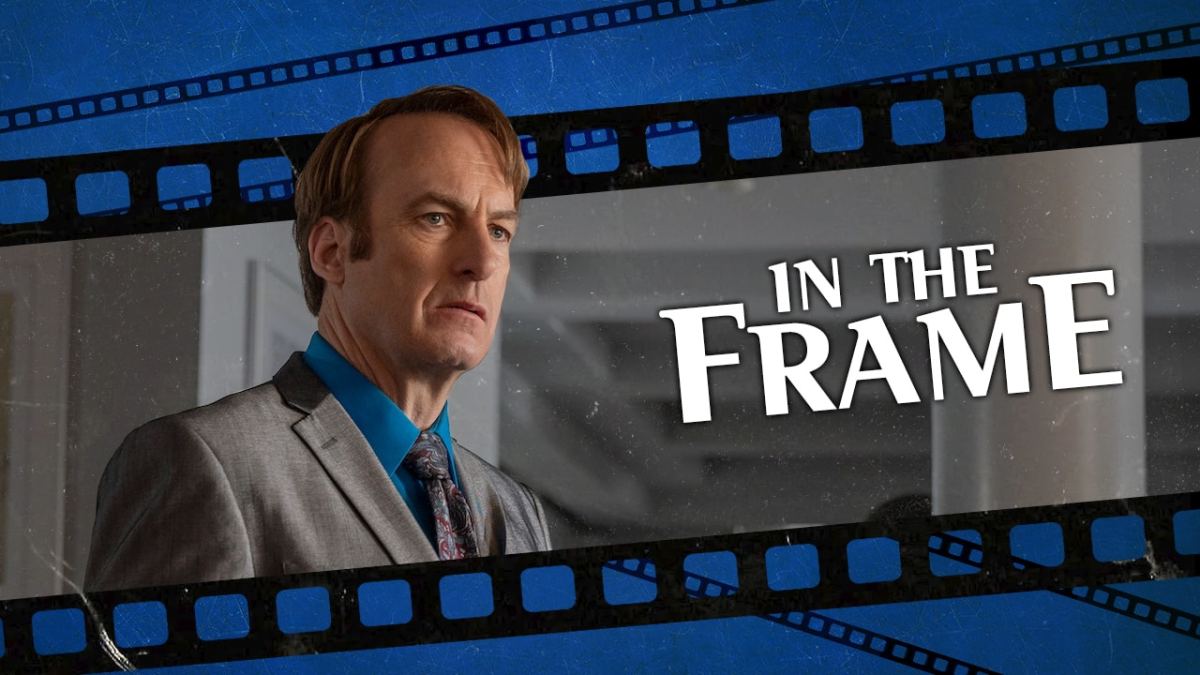Better Call Saul has always quietly been one of the best shows on television throughout its run, but its fifth season was exceptional. Creators Vince Gilligan and Peter Gould have confirmed that Better Call Saul will wrap up after its sixth season, and that seems appropriate. Better Call Saul feels like a coda to the so-called “Golden Age of Television” and a farewell to the antiheroes who defined it.
Critics dispute when the Golden Age of Television actually began. Television critic Emily Nussbaum, for example, argues that histories of the era tend to gloss over the impact of shows like Buffy the Vampire Slayer and Sex and the City in terms of pushing the kind of storytelling that defined the era. Oz is also frequently overlooked in discussions of the early history of the period.
However, most critics would agree that The Sopranos was the flagship show of the era’s early years. It also established a template for the shows that would define the era. The Golden Age of Television was defined by the study of dysfunctional male antiheroes, typified by Tony Soprano (James Gandolfini). It seems like two decades of television sprawled outwards from Tony Soprano.
Brett Martin’s definitive oral history of the era was fittingly titled Difficult Men. Sometimes, like Al Swearengen (Ian McShane) on Deadwood, these men weren’t technically the lead. Sometimes, like Nucky Thompson (Steve Buscemi) on Boardwalk Empire, they operated largely as an absent center. But they were always there.
There is also debate about when the Golden Age of Television ended, or if it ended at all. However, it is clear that times have changed. Maybe the Golden Age ended with Mad Men. Maybe it lasted longer, only dying alongside watercooler television with Game of Thrones. This is now the era of “peak TV.”

Qualitatively, this argument is all just a little overblown and melodramatic. There has always been great television, and there will always be great television. It’s hard to feel too broken up about the end of the so-called Golden Age when the past few years have given us shows like Watchmen, Primal, Undone, Chernobyl, Succession, Barry, and The Good Place.
However, it is clear that a certain type of television drama has moved to the margins. The millennial antihero no longer anchors the television universe. Ray Donovan never captured the zeitgeist, and it was canceled unceremoniously earlier this year. Ozark and Narcos are thriving on Netflix but don’t inspire cultural conversation as Breaking Bad once did.
Then again, Better Call Saul too has been quietly chugging along at its own pace for quite some time. Its ratings are solid but not spectacular. Bryan Cranston won four Emmys for Breaking Bad, but Bob Odenkirk has yet to win a single Emmy for his work on Better Call Saul. Anna Gunn won two Emmys for Breaking Bad, yet Rhea Seehorn has yet to receive even a nomination for Better Call Saul.
In some ways, Better Call Saul feels like a holdover from that earlier period of prestige television, those stories about difficult men. In that sense, it is a show out of time — and not just because it is set in the distant past of 2004. Of course, Jimmy McGill (Odenkirk) is a different sort of difficult man than Walter White (Cranston), and Better Call Saul is a different sort of show than Breaking Bad.
Over its five seasons, Better Call Saul has slowly crept up on Breaking Bad. Despite a host of cameos, the show is more than just pandering nostalgia for Breaking Bad. In its opening season, the big crossover guest star was minor Breaking Bad drug lord Tuco Salamanca (Raymond Cruz). It waited until its third season to introduce Walter’s future foil, Gustavo Fring (Giancarlo Esposito).

The fifth season closes the gap significantly. Breaking Bad regular Hank Schrader (Dean Norris) pops up in two episodes. Lalo Salamanca (Tony Dalton) becomes a major player in the drama, tying ominously into Jimmy’s panicked references to a “Lalo” during his first encounter with Walt in Breaking Bad. Jimmy becomes a “friend of the cartel,” being folded into New Mexico’s underworld.
More striking than the similarities between Better Call Saul and Breaking Bad are the differences between the two. Walter White is arguably as much an archetypal “difficult man” as Tony Soprano. He is a criminal who lies to his family, who murders and manipulates, and who constructs an elaborate mythology around himself as he destroys people’s lives.
Breaking Bad is unambiguous that Walter White is a villain. He is a selfish and prideful man. He uses a cancer diagnosis to justify becoming a monster, rejecting generous offers to pay for his treatment through legal means. Creator Vince Gilligan describes Walter White as “a pathetic character.” In the finale, Walt confesses that he didn’t become a drug kingpin to help his family. “I did it for me.”
Of course, Walter White is still an appealing character. Smart and resourceful, he comes out on top of seemingly impossible situations consistently. It is easy to understand how some fans fetishized Walt in spite of his monstrousness. Emily Nussbaum described these as “bad fans,” some of whom hated Skylar White (Gunn) for being “the good guy” and daring to call Walt out.
This isn’t to diminish Breaking Bad, which is still one of the best television shows ever. Indeed, it’s a universal phenomenon with these sorts of antiheroes, which makes sense given how these shows treat these men. Darkness and violence are objects of fascination. Even Don Draper (Jon Hamm) from Mad Men gets an absurd personal history that is effectively “the backstory of a serial killer.”

This is what makes Better Call Saul so fitting a companion piece and so effective a coda to this era of difficult men. Jimmy McGill is as complex and fascinating as Walter White, as compelling and flawed. However, Better Call Saul is structured to emphasize how pathetic and self-destructive Jimmy is rather than to treat him as a dark and stereotypically masculine protagonist. He’s no Kevin Costner.
The fifth season repeatedly echoes Breaking Bad, but in ways that make it clear how hollow this sort of antiheroism is. In “JMM,” Jimmy gets to deliver his own version of Walt’s iconic “I am the one who knocks” speech to Howard Hamlin (Patrick Fabian). In both cases, the protagonists are trying to assert their dominance over a close acquaintance, to prove that they are in control.
It’s debatable to what extent Walt’s speech was supposed to be ironic, a man becoming unhinged. It was quickly adopted as a “badass” moment. In contrast, Jimmy’s outburst is tragic and humiliating. It’s heartbreaking. Howard can’t even look at Jimmy as he walks away from the deranged lawyer ranting about being “a god in human clothing” and how “lightning bolts shoot from (his) fingertips.”
The fifth season of Better Call Saul is consciously designed to mirror the fifth season of Breaking Bad. In both seasons, the antepenultimate episode finds the hero dragging a large quantity of cash through the desert. In “Ozymandias,” generally regarded as one of the best episodes of television ever, Walt rolls a barrel of his earnings. In “Bagman,” Jimmy carries two duffel bags of cash.
However, while Walt is wheeling away his own money, Saul lacks even that agency. Walt has been allowed to retain a single barrel of his $80M fortune, while Jimmy is simply a delivery man for the $7M bail for Lalo. Sure, Jimmy manages to take a $100,000 cut for that errand, but it seems like small change considering the hell that Jimmy endures trying to carry that money back to civilization.

The final episodes of Breaking Bad stress Walt’s resilience and commitment, but the final episodes of the fifth season of Better Call Saul emphasize Jimmy’s vulnerability. In the desert, Jimmy is forced to drink his own urine to survive. (It’s no small irony that he stores it in a bottle from a law firm that fired him in part for abuse of the office toilet.) Jimmy suffers genuine post-traumatic stress disorder from his experience.
Better Call Saul repeatedly points out how empty all of this criminality is for Jimmy. Walt survives almost everything that Breaking Bad throws at him through ingenuity. The prequel setting of Better Call Saul means that the audience already knows that Jimmy will lose most things he might gain over the show’s run, including his beloved Kim Wexler (Seehorn).
The result of all this renders Better Call Saul a truly worthy companion piece to Breaking Bad and a thoughtful eulogy for the antihero era of television. It presents an unvarnished television antihero who is just as tragic and sympathetic as Walter White, but stripped of any glamor and glory.
This feels like a distillation and purification of the genre that defined the Golden Age of Television, a study of a particularly dysfunctional style of protagonist that avoids fetishizing that dysfunction. By its nature, Better Call Saul seems less likely to attract those “bad fans” of Breaking Bad. It’s notable that while Skylar White was hated by some fans, Kim Wexler is a breakout character.
If the golden days of the television antihero are truly behind us, the genre couldn’t ask for a more reflective farewell than Better Call Saul.






Published: Apr 24, 2020 11:00 am